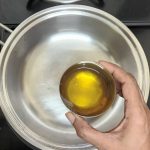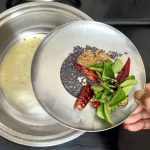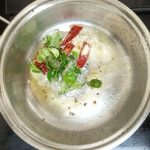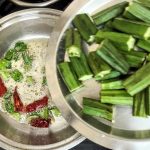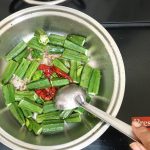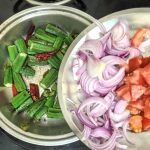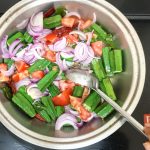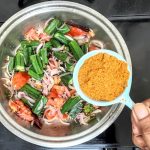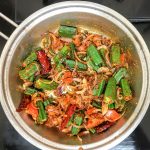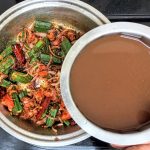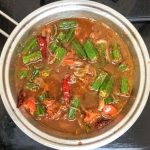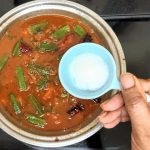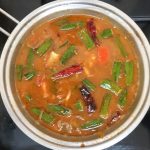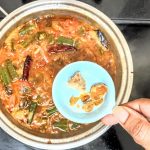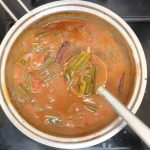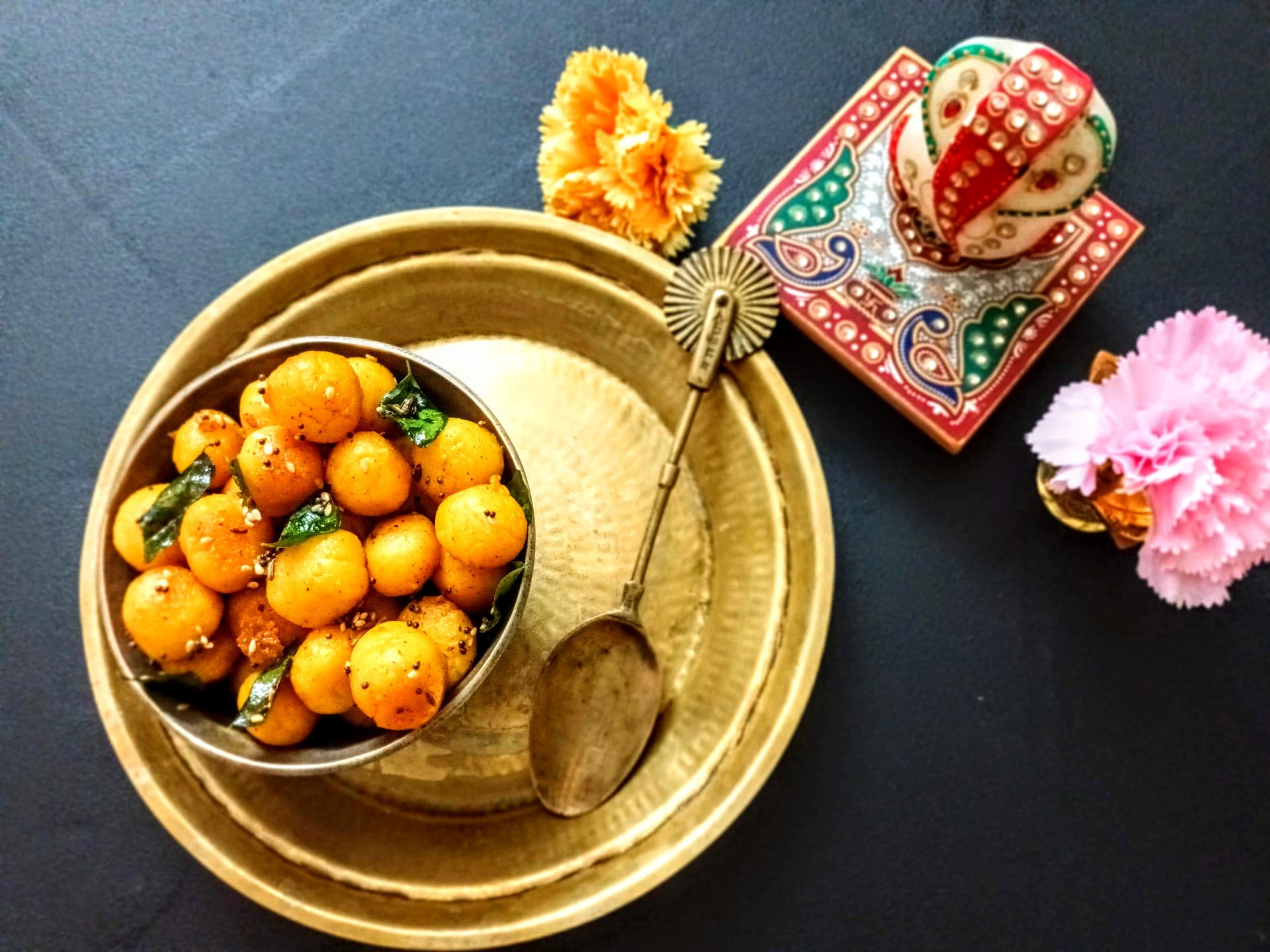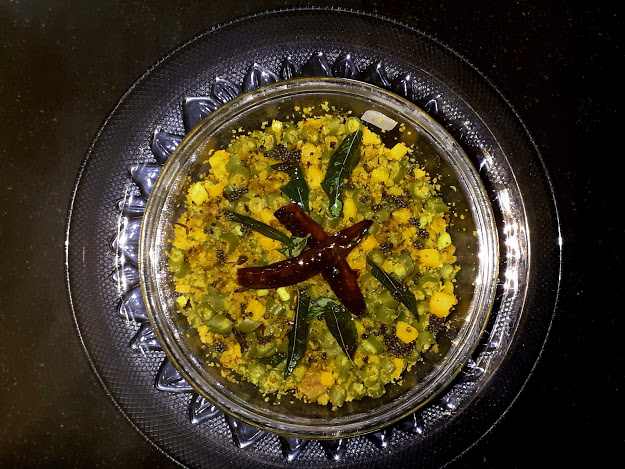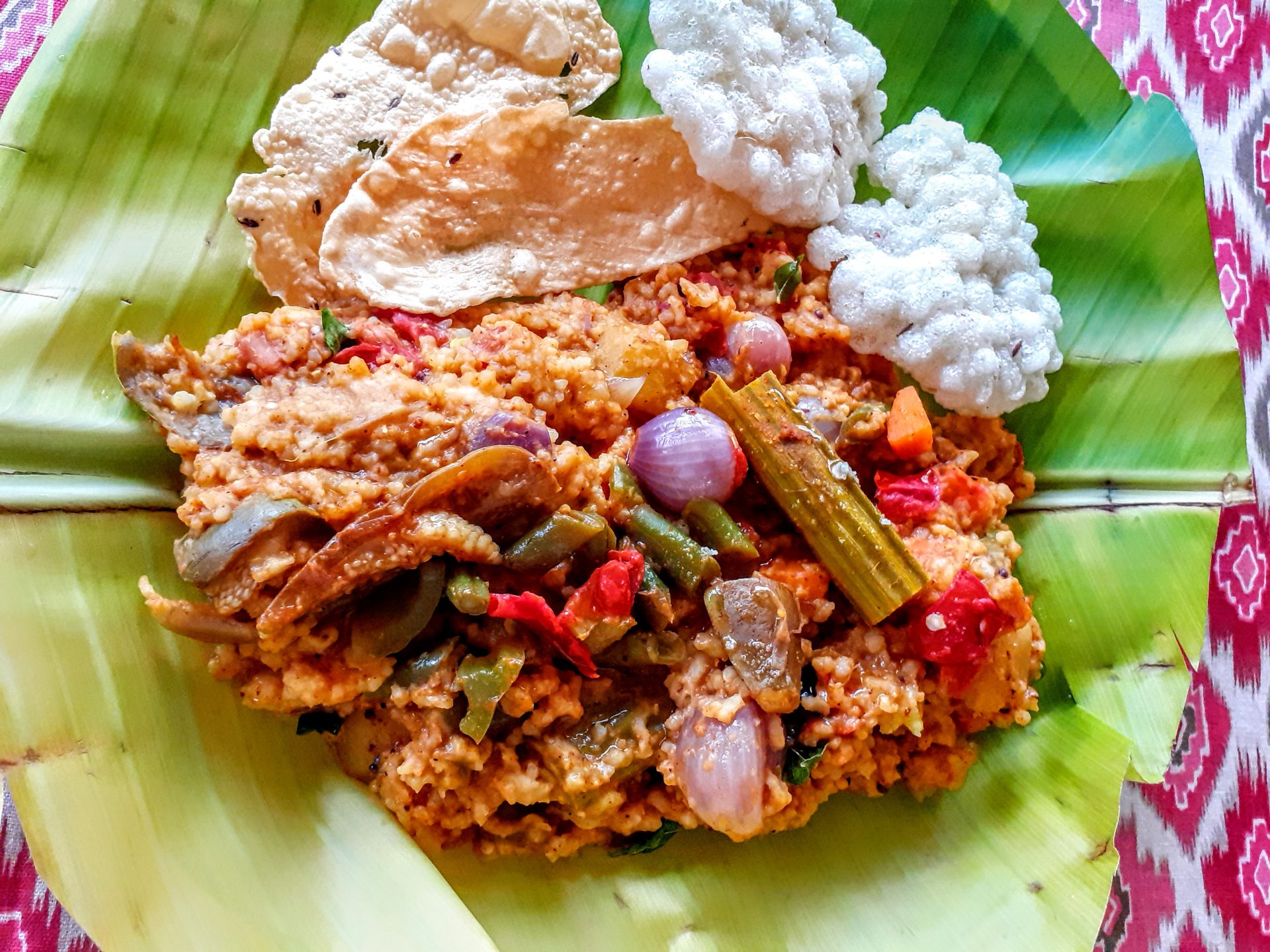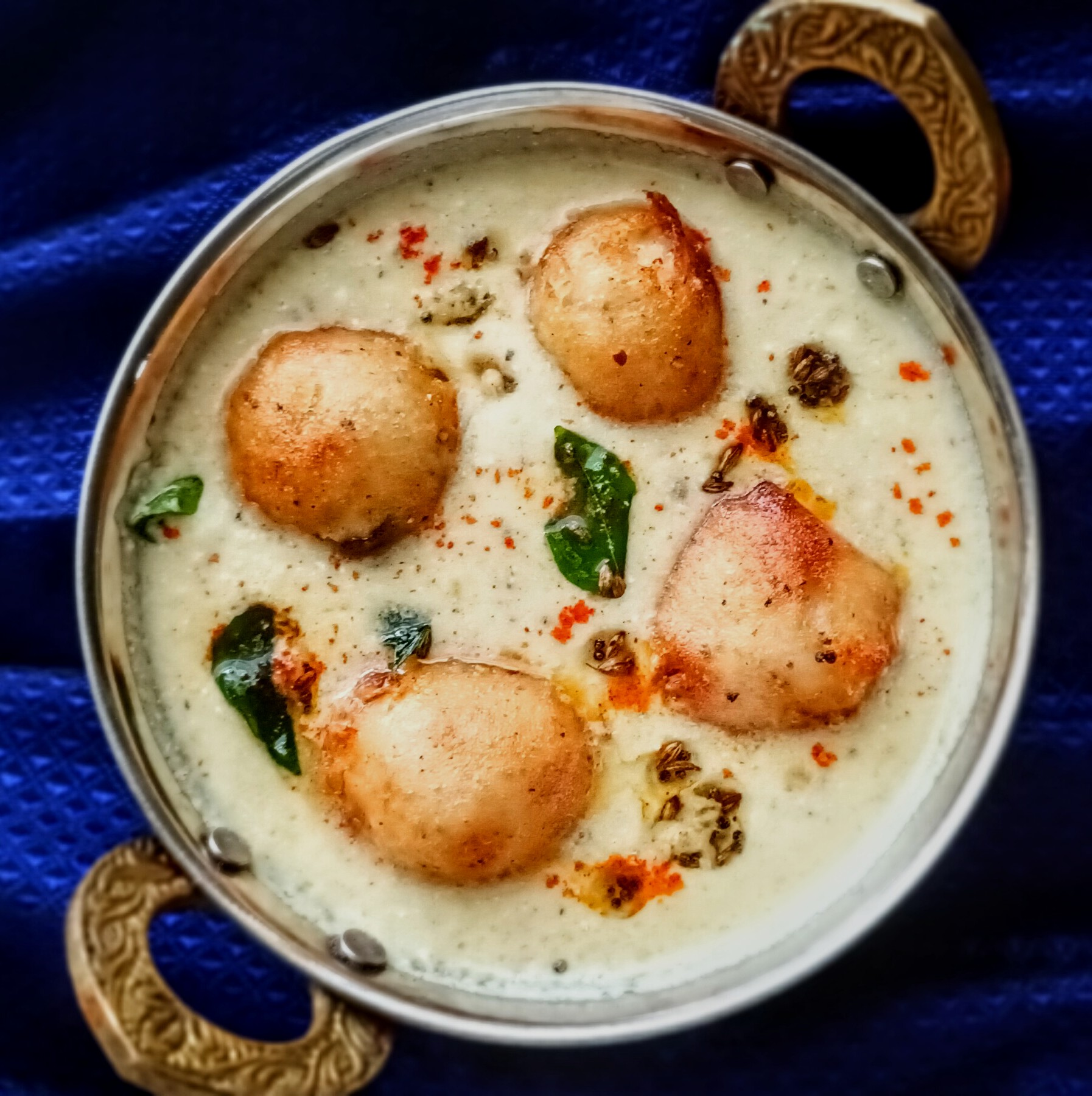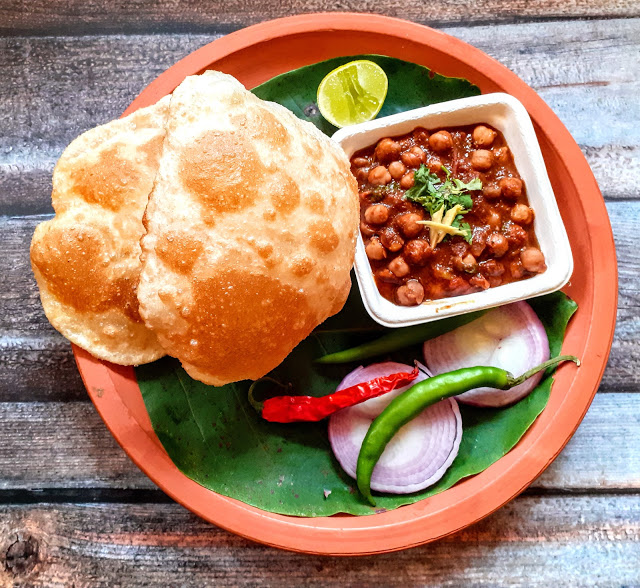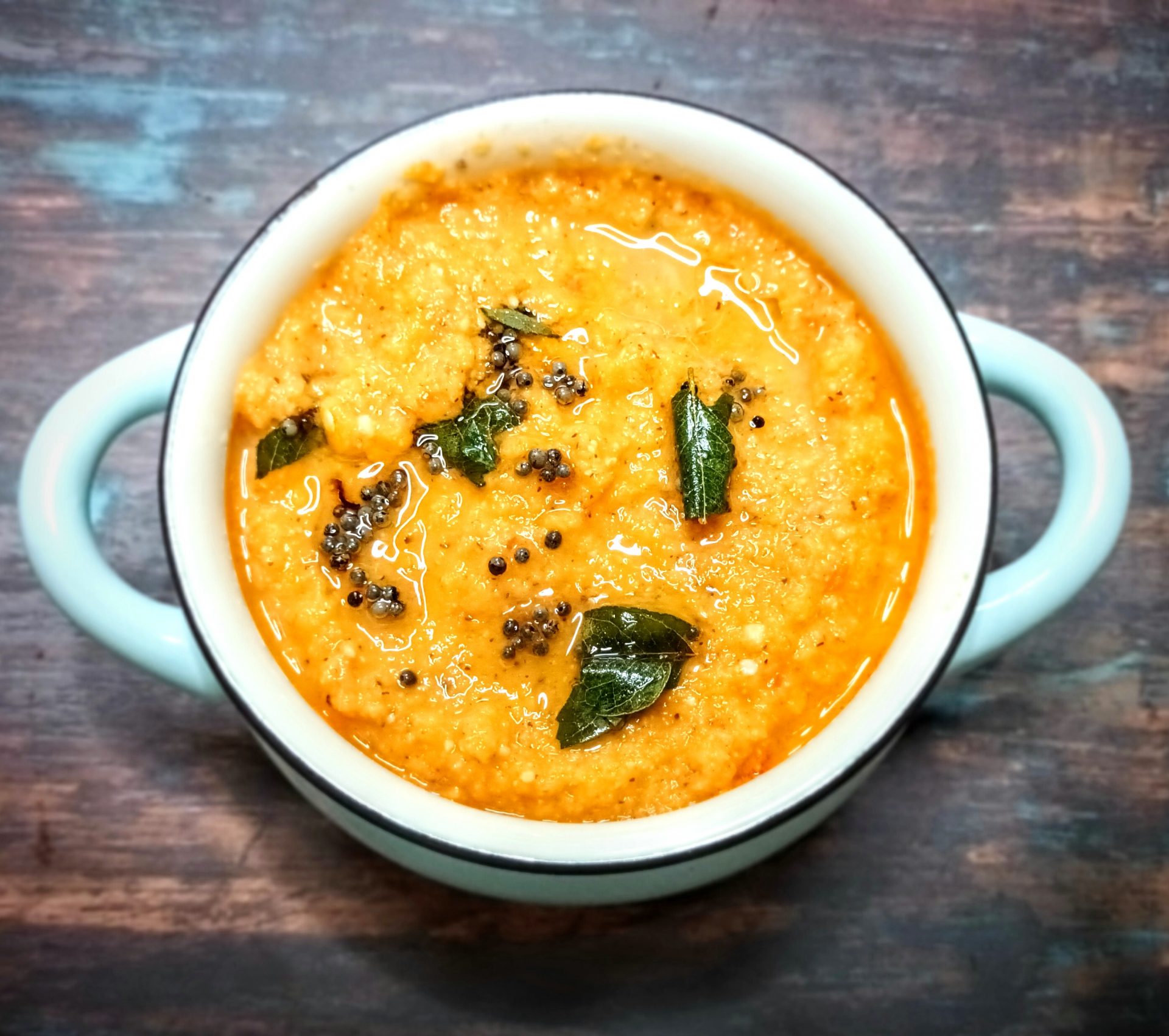Vendakai Vatha Kuzhambu/ Tangy Okra Curry
Jump to recipeVatha Kuzhambu is a traditional South Indian recipe. There are many variations to this recipe, where a large variety of vegetables or dehydrated berries(Turkey berry, cluster beans, etc;) are simmered in a spicy tamarind sauce. Usually served with hot rice and ghee, but goes well with Dosa and Idli too. I have used Sambar powder here, though Vatha Kozhambu powder is also used, there is not much of a difference between, the Sambar and Vatha Kuzhambu powder. For the recipe of Sambar Powder click here.
Usually when I cook this for my North Indian friends, I get asked what is the difference between Sambar and Vatha Kuzhambu. So, I thought I must clarify that here, as many of you might also have the same query, if you aren’t familiar with south Indian food. In Sambar, cooked dal is added, whereas Vatha Kuzhambu is devoid of any Dal. Also, the stage at which the Sambar powder is added, makes all the difference to the taste of the Kuzhambu/curry. The vegetables or berries used are sauted in oil along with the Sambar powder for making Vatha Kuzhambu, whereas in Sambar, the vegetables are directly cooked in tamarind water, without sauteing. The consistency of the two also varies. While sambar is on the thinner side, Vatha Kuzhambu is a thick curry.
In different regions of Tamilnadu and Kerala this dish is made differently. While in Tamil cuisine, coconut is not added to this dish, our Keralite counter parts add ground coconut. Both the version taste very good. There is another version called the kalyana Vatha Kuzhambu, which is served at weddings, I shall dedicate a separate post to this version soon.
You will find a similar Vatha Kozhambu recipe here on the blog, where I have used Shallots, click here for recipe. Homemade Sambar powder always gives a tastier Kuzhambu/curry/Sambar. For the recipe of Sambar Powder click here.
While you are here I request you to take a look at other south Indian recipes like- Pachai Sundakkai Kuzhambu, Pachai Mochai Kuzhambu, Parupu Urundai Kuzhambu, Mor Kuzhambu, Beans Parupu Usili, South Indian Style Vegetable Kurma, and more…
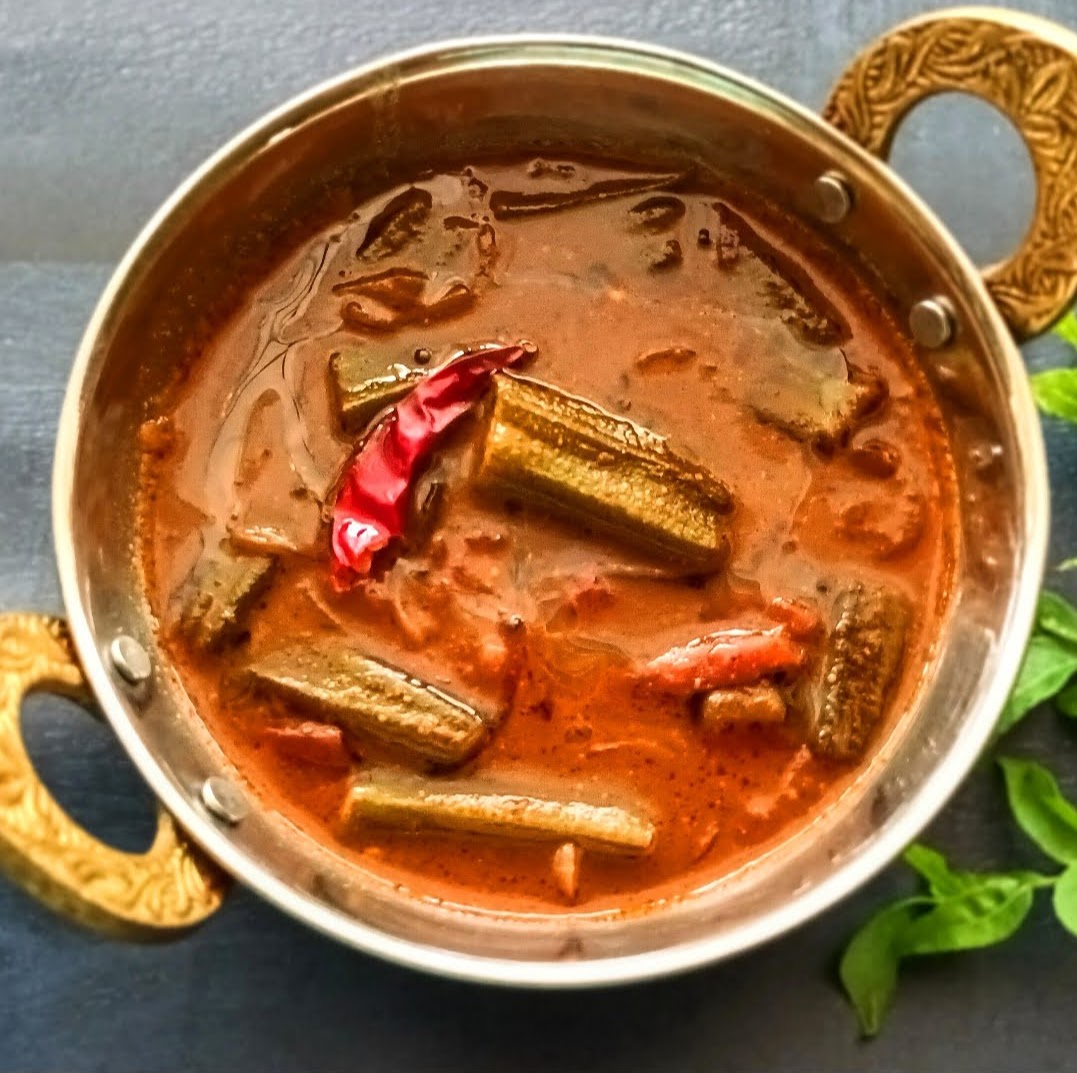
Ingredients
- Okra/ Ladyfinger 100 gm chopped to 1 inch pieces
- Tomato 1 large chopped
- Onion 1 large sliced
- Tamarind lemon sized ball( soaked in water and pulped)/ 1.5 tbsp Tamarind Paste
- Salt as per taste
- Sambar powder 1 tbsp
- Red chilli powder 1 tsp
- Turmeric powder 1 tsp
- Asafoetida 1 tsp
- Mustard seeds 1 tsp
- Fenugreek seeds 1/2 tsp
- Dry red chillies 2 broken
- Curry leaves a few
- Sesame oil/ Til oil 2 tbsp
- Jaggery a small bit (optional)
- In a pan/karahi heat some Til oil(preferably, if not continue with refined oil). Add mustard seeds, fenugreek seeds, dry red chillies, asafoetida, curry leaves, and fry until the mustard seeds crackle. Add the chopped Okra/Ladyfinger, and stir well so that the oil coats all the Bhindi/Okra. Fry for a minute or two.
- Now add the sliced onions and tomatoes, and saute for 30 seconds. Now add the Sambar powder and fry well until the raw smell goes away. If the masala looks a little dry, add more oil. Take care not to burn the Sambar powder, or all taste will be ruined.
- Now add the Tamarind pulp followed by salt and let it boil. Once the mixture comes to a boil, add little jaggery and continue to cook until the gravy reduces to a curry consistency. Check for salt and spices and add accordingly. I have not added red chilli powder, as the Sambar powder is spicy enough. The Vendakai Vatha Kuzhambu is ready to serve.
In a pan/karahi heat some Til oil(preferably, if not continue with refined oil). Add mustard seeds, fenugreek seeds, dry red chillies, asafoetida, curry leaves, and fry until the mustard seeds crackle. Add the chopped Okra/Ladyfinger, and stir well so that the oil coats all the shallots. Fry for a minute or two. Now add the sliced onions and tomatoes, and saute for 30 seconds. Now add the Sambar powder and fry well until the raw smell goes away. If the masala looks a little dry, add more oil. Take care not to burn the Sambar powder, or all taste will be ruined. Now add the Tamarind pulp followed by salt and let it boil. Once the mixture comes to a boil, add little jaggery and continue to cook until the gravy reduces to a curry consistency. Check for salt and spices and add accordingly. I have not added red chilli powder, as the Sambar powder is spicy enough. The Vendakai Vatha Kuzhambu is ready to serve.
Notes:
- I have used Okra/Ladysfinger here, other vegetables that can be used are Drumsticks, Shallots, Onions, dehydrated berries like Turkey berry(Sundakai), and even dehydrated vegetables like Cluster beans, Bitter gourd, etc.
- Sesame oil enhances the flavour of the dish, so I highly recommend it.
- Frying the dry masalas in the oil well gives the dish the perfect flavour. While frying the vegetables after adding Sambar powder, ensure there is sufficient oil, so that the sambar powder does not burn.
- The fenugreek seeds also impart the aroma and a lovely flavour to this dish, but they should be used in the quantity mentioned and not more, as they can turn the dish bitter.
- Adding Jaggery is an optional step, but I highly recommend it as it stabilizes the tanginess.
- If using Tamarind paste, dilute it in 1.5 cups of water and add as recommended.
Get yummy recipes delivered to your inbox!
Be the first one to know about our new recipes. Leave your email below and get notified as soon as new recipes are published!
